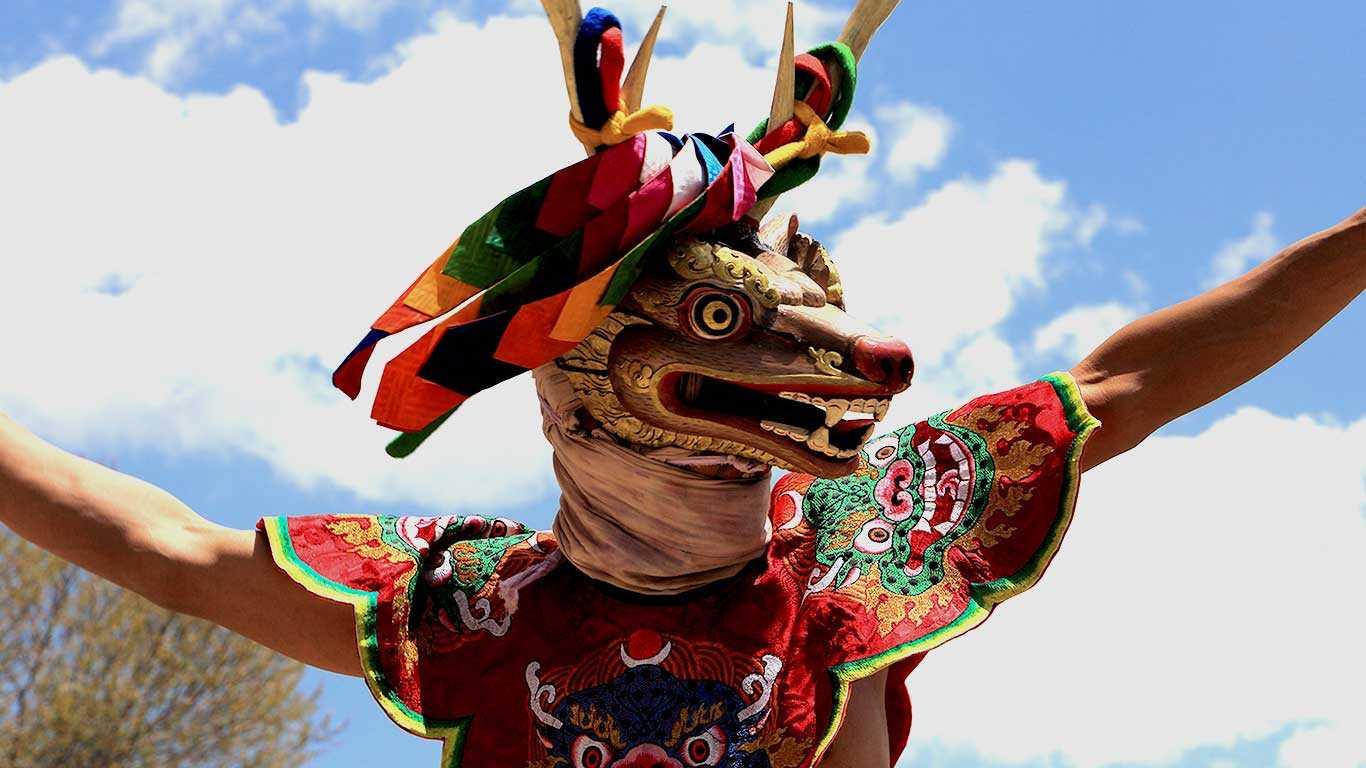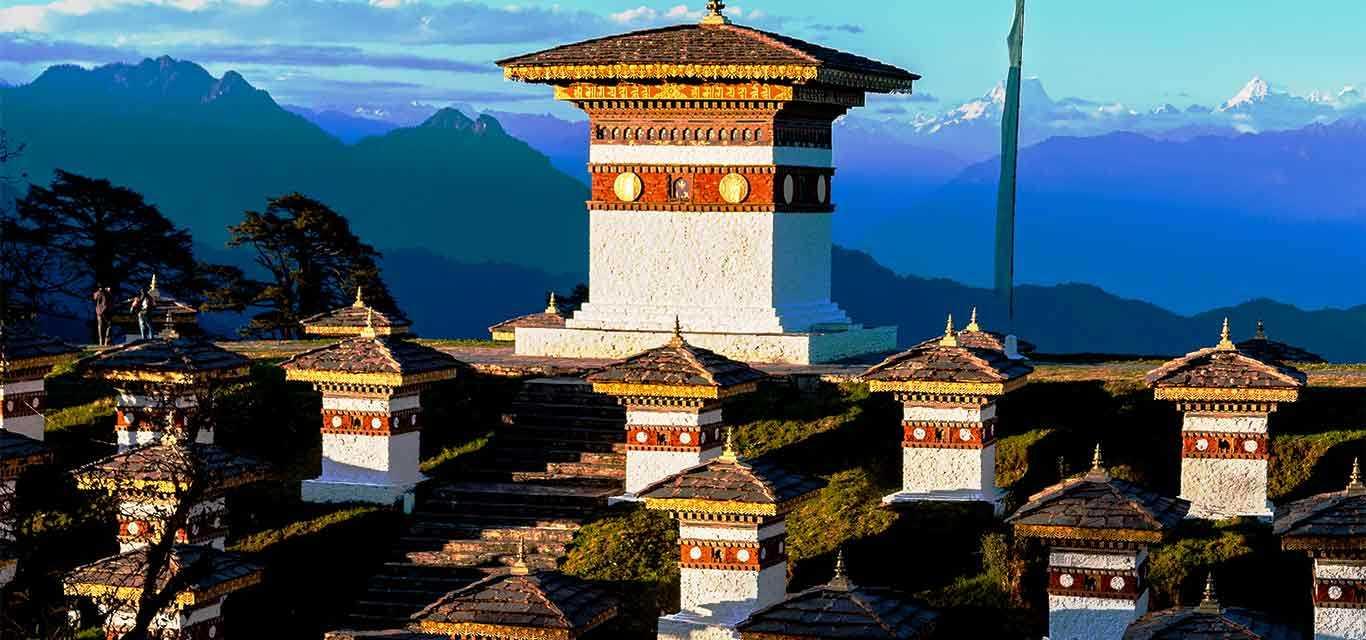Dos and Don'ts While Visiting Bhutan

Dos and Don'ts While Visiting Bhutan
Bhutan, known as 'The Thunder Dragon Kingdom', is a small country in the eastern Himalayas. With its beautiful scenery and culturally enhanced and environmentally conscious tourism practices, Bhutan truly represents a different kind of destination.
The country has many ancient and contemporary customs; the rich and colourful festivals, monasteries, and magnificent dzongs are among the heavily visited sites.
Bhutan has the concept of GNH—Gross National Happiness—which assures the happiness of the nation's population in contrast to the production of money.
This approach has played a significant role in preserving the sovereignty of the country's cultural and natural endowment, thereby making it unique for tourists.
Tourism in Bhutan is strictly controlled through its tourism policy of 'High-Value Low Impact'; by this, every foreign visitor is supposed to engage the services of registered Bhutanese tour operators and is expected to pay a minimum tariff per day.
This policy shall seek to protect the environment and culture of this country with the commendable aim of addressing the population's welfare through tourism activities.
Some of these are the Tiger's Nest Monastery, a monastery built on a cliff, and the architectural marvel Punakha Dzong. Bhutanese food is hot or spicy, with some relevant foods, including Ema Datshi, which is potatoes and cheese with chillies.
Being almost untouched, people-friendly, and deeply rooted in tradition, travelling to Bhutan is an experience any traveller must consider an adventure and a learning experience.
Facts about Bhutan
Gross National Happiness (GNH):
Bhutan is one of the only countries to shift from the traditional economic measurement of GN, gross national happiness, or GNH.
This unique development paradigm mainly drives the progress of its people rather than economic success, while valuing the social and geoeconomic environment rather than even business viability.
Carbon-Negative Country:
Bhutan is one of those notoriously few carbon-negative countries, which means it removes more carbon dioxide from the globe's circulating supply than it releases due to forests.
Forests somewhat inhabit the remainder of the country since a survey shows that about 72% of the total area of the land is covered by forests, thus helping to give an appropriate balance between environmental conservation and the protection of biological diversity.
Limited Tourism:
According to the strategies set by the government of Bhutan, it has pursued what can be called a 'High Value, Low Impact' tourism policy; in this regard, it is crucial to note that all tourists engage the services of accredited tour operators.
This helps to limit tourists' access while unleashing negative impacts on the environment, while at the same time, it protects the benefits of tourism for the people.
Unique Architecture:
Bhutanese architecture is also noteworthy, with painted dzongs or fortresses and houses with their own carvings and paintings.
There is a perception that every structure should have architectural aesthetics that match the entire country's cultural base and spirituality.
National Dress:
The people of Bhutan need to follow some sort of dress code, and it's becoming a trend to wear traditional dresses. The men wear a go, a knee-length robe fastened at the waist, while the women wear a kira, an ankle-length dress.
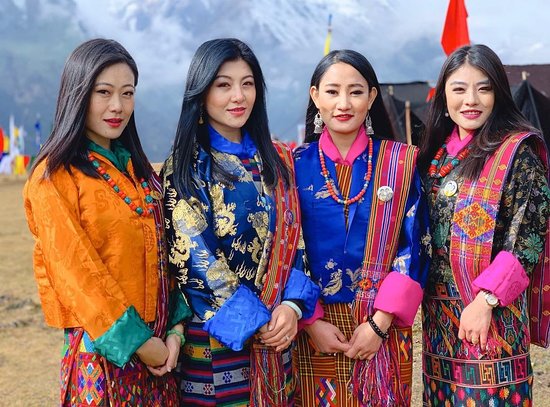 These garments are mostly decorated and made from fabric manufactured within the community. They are used during dance, worship, and other significant events or occasions.
These garments are mostly decorated and made from fabric manufactured within the community. They are used during dance, worship, and other significant events or occasions.
Buddhist Heritage:
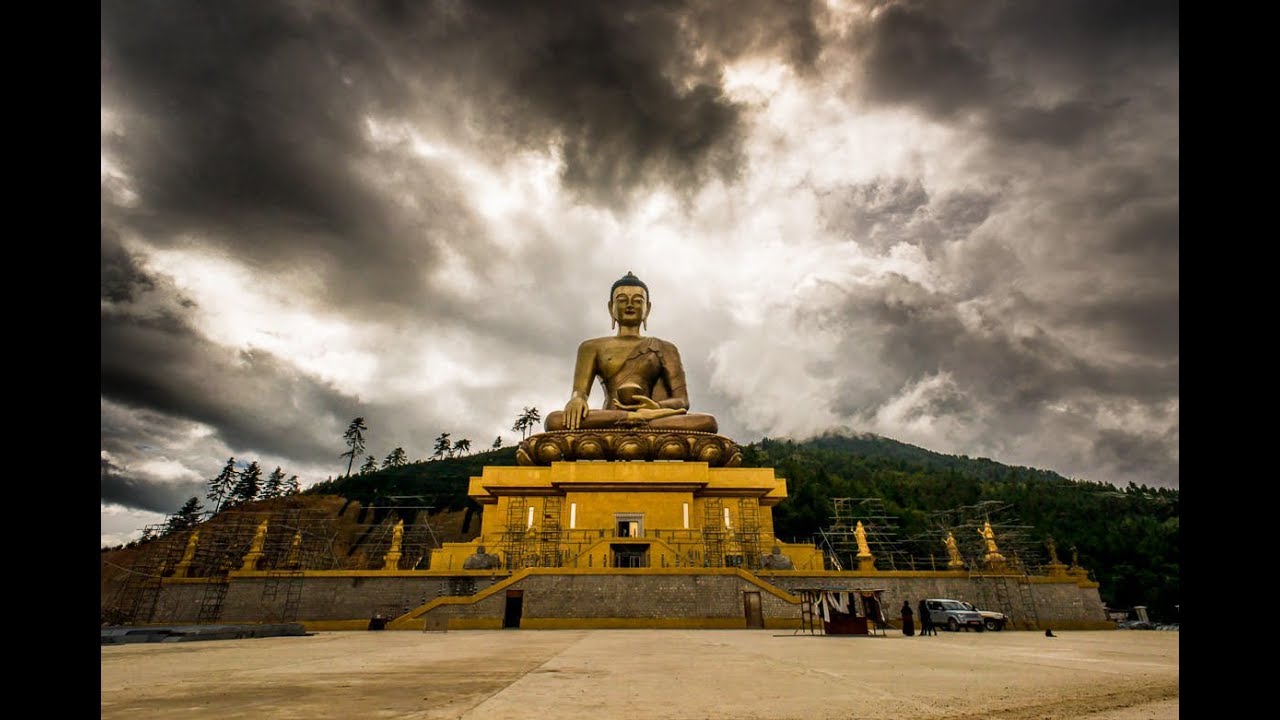
Buddhism is the only recognized religion in Bhutan and is widely practiced by people of Bhutanese origin.
Almost all the country's regions have numerous monasteries and temples, though some are popular among pilgrims.
Ultra-orthodox Buddhism is cultivated in the culture, arts, and festivals that are observed in Bhutan.
Unique Festivals:
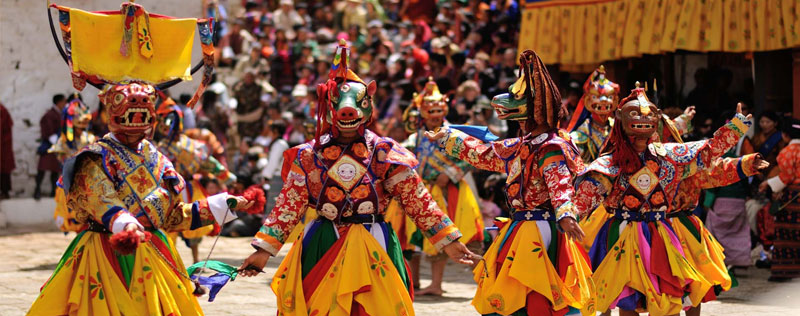
Tsechus are colourful festivals of Bhutan, often associated with Buddhist sermons, dance, songs, and other ceremonies.
Housing fests include dances, and the citizens put on colorful outfits; thus, visitors can learn about the cultural and religious aspects of the Bhutanese citizens.
High Literacy Rate:
Bhutan has made significant progress in the Education Area, with a literacy level above seventy percent.
Education is one of the significant focus areas of the government of the country since it is one of the necessary aspects of life and a sustainable future for the country.
All its citizens are provided with an education free of charge.
Biodiversity Hotspot:
Due to its ratification, Bhutan has been accepted as one of the 34 Biodiversity Countries for its consideration as one of the 25 Mega Hot Spots for the conservation of the world. Also, due to its inhabitants, like the Snow Leopard and the Red Panda.
The natural features in this country include subtropical forests, alpine pastures, wetlands, and other habitats that interest tourists and researchers.
Traditional Medicine:
Bhutan has a strong culture of traditional herbal medicine called Sowa Rigpa, which is used even today along with the conventional system of medicine.
It is an age-old practice that involves using natural products and traditional techniques to treat diseases, aligning with the GNH concept by focusing on health.
10 Do's While You Are in Bhutan
Respect Local Customs and Traditions
Culture plays a very important role in tourism. Thus, when visiting Bhutan, it is important to conform to its customs. Traditionally, Bhutan is a Buddhist country, and its people are very proud of their traditions.
Some measures include the following: Visitors should take a little time to learn culturally appropriate manners and practices, for instance, saying "Kuzuzangpo la," which is 'hello' in the local tongue, Dzongkha.
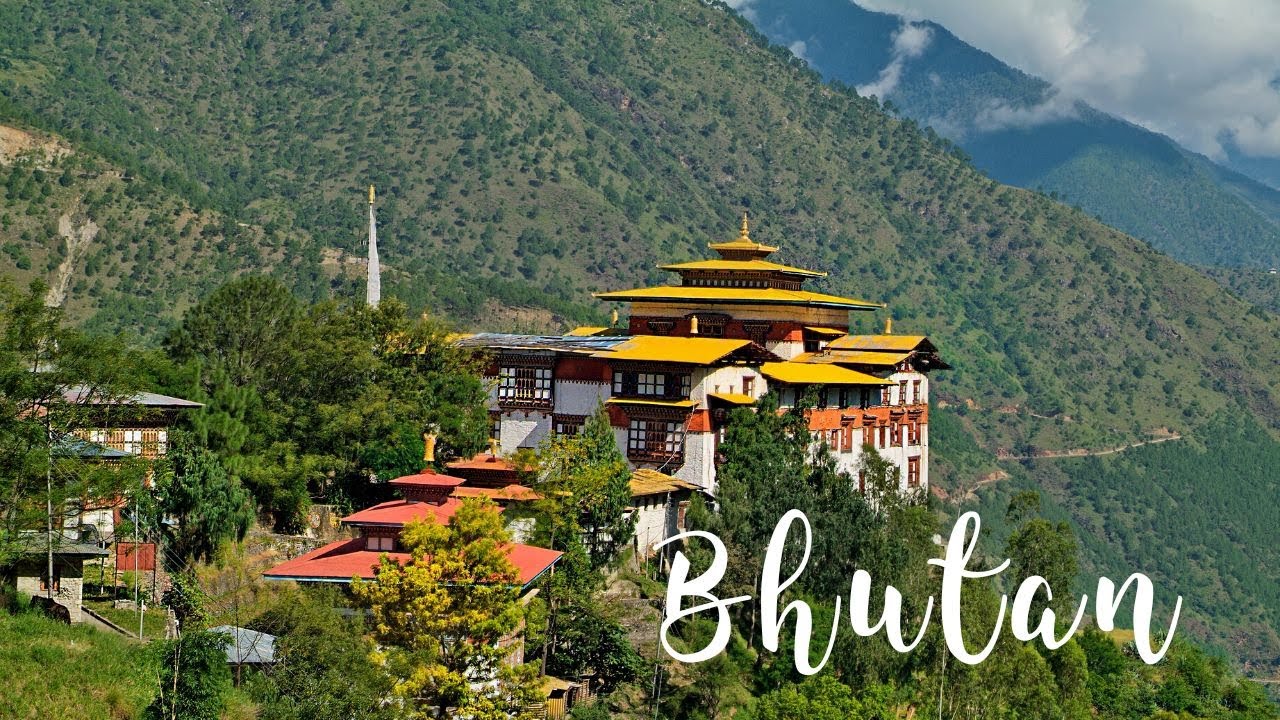 Respect one's dress, especially when in religious places, as there are times when the dress code is restricted. This is one of the most important things to do while in Bhutan.
Respect one's dress, especially when in religious places, as there are times when the dress code is restricted. This is one of the most important things to do while in Bhutan.
Individuals are expected to dress formally, especially the men wearing the go and the women, the girls, to show respect for the country's customs. Maintaining certain taboos will also be helpful.
For example, do not point at people or religious items, as locals will appreciate it and be friendly.
Visit Monasteries and Dzongs
In Bhutan, many monasteries and Dzongs are unique fortresses to add to the tour schedules. These architectures look great and beautiful and act as important landmarks for cultural and religious practices.
The most famous is the Monastery of Tiger Nest, which is situated on a cliff and gives a view of the Paro Valley.

Interacting with the monks and gaining some exposure to the Monastic community of Bhutan will help them understand Bhutanese spirituality.
Therefore, it is more appropriate to have this history of the dzong different from another, indicating a chapter of Bhutanese history unique to each dzong.
Participate in Local Festivals
The Bhutanese people are also famous for their unique festivals called tsechus, which occur all year round.

A visit to one of the techs entices the culture vultures and gives the visitors a bird's eye view of how the people of Bhutan live their lives with as much happiness as they can muster.
Some events are the dance festival, the Paro Tsechu, and the Punakha Dromche Festival, which are spectacles and considered lively events.
Local people are very hospitable, and visitors can wear traditional clothes and dance with them, responding to musical accompaniment.
There are usually food sales and many different handmade products. Attending such events brings people closer to the country's traditions.
Trek in the Himalayas
Bhutan boasts several tracks that are friendly to trekking enthusiasts, with many of the tracks having different difficulty levels that any trekker can attempt.
The country's magnificent mountain ranges, beautiful valleys, and clear rivers make its landscape ideal for adventure tourism.
Druk Path Trek is one of the most frequently chosen trails, covering the distance between Thimphu and Paro and offering beautiful views of the mountains.
Trekkers are advised to expect changes in weather and make adequate preparations. It is advisable to hire a local guide since they know the difficult terrain and can easily take the rider through the chosen trails safely.
Hiking in Bhutan fosters health benefits and the aesthetic or visual aspect of the state's ecological system.
Try Bhutanese Cuisine
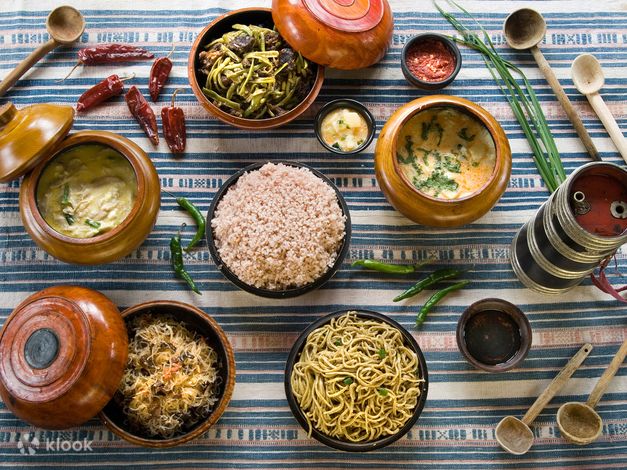
Taste is the main feature defining Bhutanese cuisine, and recipes are made with products available in Bhutan.
Local favourites include Ema Datshi, a chili pepper and cheese stew that is regarded as Bhutan's national dish.
You can also taste other traditional dishes like Phaksha Paa, pork with red chilli, and Jasha Maroo, spiced minced chicken.
It is a tradition in Bhutan for people to take meals in groups, and this is common among friends and relatives.
One should not be discouraged from experimenting with different tastes and foods, as this is an essential part of the Bhutanese lifestyle. Also, visitors should consider the etiquette of eating.
For example, it is polite to use only the right hand when handling utensils and passing food.
Support Local Artisans
Concerning the arts, Bhutan has a rich cultural heritage in artistry and craftwork, such as weaving, carving, and traditional arts. Thus, buying locally made products, especially handicrafts, contributes to the economy and supports the maintenance of such activities.
In towns including Thimphu and Paro, tourists can shop for traditional handicrafts in the markets, including textiles, thangka paintings, and pottery.
Interacting with artisans and obtaining information on their products can be useful in fostering an understanding of Bhutan's culture.
Moreover, involving the public in workshops or demonstrations could make the viewing of Bhutanese art more interactive.
This is also a very important Do's While You Are in Bhutan.
Practice Responsible Tourism
Another thing to do while in Bhutan is to be a responsible tourist. This will minimize their carbon footprint on the environment and help support the locals. This involves reducing waste, which should be done weekly.
Everyone who travels should not throw litter on the floor but dispose of it in the dust bins provided.
Also, when hiking or exploring the wilderness, one must ensure that they only follow the trails and do not go off track to avoid damaging special ecosystems.
Paying attention to supporting environmentally friendly lodgings and using the services of shops and eating places is also a good practice for sustainable tourism.
So, by being aware of the consequences of their visit, they do not contribute to the contamination or degradation of this nation's beautiful landscapes.
Engage with Local Communities
Engaging with the people of Bhutan is one of the most enjoyable ways to experience the country. Tourists are welcome to interact with the people of Bhutan by part in everyday activities.

You can visit people's homes. Participate in or attend an interaction that helps in the exchange of cultural practices. It acts as an opportunity for travellers to learn by getting to know people in Bhutan.
Accommodation is also not a problem, as many would-be visitors can stay with the locals in homestays. Apart from enjoying the benefits of the trips, travellers can make a positive impact on the lives of the people they encounter.
Learn Basic Dzongkha Phrases
Learning at least some manners of greeting and other simple phrases in Dzongkha, the Bhutanese national language, will make the trip more enjoyable and meaningful.
It is quite easy to relate to the people of Bhutan; simple English phrases like 'Kuzuzangpo la', which means hi/ hello, and 'Kadrinche la', which means thank you, go a long way in making them comfortable.
Most Bhutanese are fluent in English; however, it is always welcoming when one slightly attempts to speak the locals' language, making the interaction friendly and warm.
Knowing more of the popular sayings surrounding directions, food, and even greetings can assist visitors in improving their mobility in the area.
Be Mindful of Photography
However, apart from these beautiful landscapes, visitors must only take photos with permission due to the great cultural significance of these places.
When taking photos, ask permission, especially from people in rural or conservative areas.
Only take photos in religious places if you know the limitations that the management allows. Particular regulations might apply to the use of a camera in some districts, and therefore, it should be addressed.
It will be noted that, with courtesy to the people of Bhutan, by observing the rules of etiquette while taking the photos, proper memories and images will be taken.
10 Don'ts while you are in Bhutan
Don't Disrespect Religious Sites
While in Bhutan, one must respect the religious aspect of the country, including temples, monasteries, and dzongs, among others. These places are historical and religious sites in the Kingdom of Bhutan.
Any person authorized to access such sites must do so, and even when accessing them, one must obey conditions, including removing shoes before entry and not taking photographs, which are not allowed.
Other matters that people must consider include dressing appropriately, especially ensuring that the knees and shoulders are not exposed.
Littering, swearing, or even walking loudly in these spaces may be regarded as highly immoral, so one must respect such customs.
Don't Wear Inappropriate Clothing
In Bhutan, people appreciate and respect humility; therefore, an ethical dress code is recommended when touring the kingdom.
Indecent dressing by women, such as displaying one's belly or thighs by wearing shorts, tight T-shirts, or mini-skirts in areas like villages or religious places, is not allowed.
Thus, travellers should wear long pants and shirts with sleeves to avoid it. Please follow these don'ts while you are in Bhutan.
It is recommended that Bhutanese people dress in traditional costumes. Such costumes can excite travel and show respect for Bhutan's culture.
Clothing in an appropriate manner ensures that one does not attract negative attention and makes it easier to create goodwill with the people in the community, leading to better interaction. Here is a packing list for Bhutan that might come in handy.
Don't Point at People or Objects
The Bhutanese believe touching or pointing at people or objects of religious significance is impolite and even impious.
For step four, rather than pointing at an object with your finger, it is recommended to use your entire hand or your chin to point at an object.
This practice is based on the cultural belief that pointing is an invasion of a person's privacy or a sign of disrespect.
Pay attention to this motion to avoid embarrassing moments during social interactions and show respect for the Bhutanese people.
Don't Smoke and Chew Tobacco in Public Places
Smoking is prohibited in Bhutan, and anyone found violating this law is liable to pay a fine.
Considering the importance of a healthy environment, the country has stringent rules and laws on tobacco use. Chewing tobacco is strictly prohibited in Bhutan, not just in public but everywhere.
Don't Offer Gifts to Children
Though buying candies, chocolates, or money for kids is natural, such gestures are not encouraged in Bhutan.
Also, giving gifts can result in children becoming rude and promoting themselves to milk from the tourists.
However, there are certain things that a visitor can do for the local people, such as buying products like arts and crafts or participating in noble community activities.
This approach is much more sustainable than travelling en masse to a specific location and assists in preserving cultural authenticity.
Don't Litter or Pollute
This will ensure that Bhutan's natural environment remains as it is, and travelers should take an active role.
One cannot just throw litter or pollute the landscape, for this is shameful and a violation of the country's environmental standards.
Visitors should ensure they dump their waste in proper receptacles and are care-conscious about the environment. Preserving Bhutan's appearance ensures generations will enjoy the country's beauty and wildlife.
Do not display intimate affection in public.
Bhutanese culture does not accept openly affectionate behaviours like hugging, kissing, etc., and such actions cause discomfort to the locals.
Visitors should refrain from exhibiting such behaviours, particularly in rural areas, where people hold on to their traditional cultures.
When encountering the Bhutanese people, it is essential to be culturally sensitive to their personal space and acquaintances.
However, they can show hospitality through good manners that involve friendly greetings and other courteous behaviours.
Do not take photos without prior permission.
Despite the scenic beauty and numerous historical landmarks, one must be cautious when taking photos. It is considered rude to take pictures of people, particularly when they perform religious rites.
Certain limitations may apply to using cameras, and following such rules demonstrates an understanding of the place's culture.
Some people may not wish to be photographed for different reasons, religious, cultural, or otherwise.
However, it can also be a positive experience, as people tend to respond better if one is always careful and does not take things without asking.
Remember Not to Disregard the Local Culture and Business Manners
Another essential aspect that cannot be overemphasised is local etiquette and protocol, especially when doing business or interacting with the local people of Bhutan.
This includes manners such as how to greet, the appropriate manners around places of worship, and what is considered proper and improper manners.
Adherence to these practices can lead to misunderstandings about the local people and may even be perceived as an insult.
Understanding the culture and norms of the Bhutanese people makes the experience more enjoyable for the tourist and increases the likelihood of a positive interaction between the Bhutanese people and Western tourists.
What should you do, and where should you visit Bhutan?
For those interested in travel destinations, Bhutan has everything any traveller wants regarding nature and culture.
One of the most famous landmarks is the Tiger's Nest Monastery (Paro Taktsang), situated on a rocky cliff in Paro Valley.
This religious place needs a beautiful walk; if approached, it gives an idea about Bhutan's spiritual past.
Punakha Dzong is a must-see, representing the country's unique architecture and history; the photo is a picturesque river intersected by the Mo Chhu river.
Some places to visit are the Buddha Dordenma Statue, a massive statue of pure bronze that overlooks the valley, and Tashichho Dzong, the seat of the Government of Bhutan and the central monastic body.
For culturally inclined people, attending a Bhutanese festival called a tsechu is an engaging affair involving dance and music.
Of the many touches held in Bhutan, the Paro and Thimphu touches are the most popular with local and international visitors.
For instance, the Druk Path Trek can be taken by daring tourists through mountainous terrains in Bhutan, where travellers are allowed to interact with nature.
Also, Dochula Pass offers a stunning view of the Himalayan mountain range and is an ideal place for a picnic.
Stroll through markets in the beautiful town of Paro and visit historical places such as the National Museum of Bhutan.
Finally, interacting with local artisans in Thimphu, where one can buy hand-woven fabrics and other local products, is a bonus to the tourists' immersion in the culture of Bhutan.
These activities exhibit the best of nature, culture, and spiritualism for which Bhutan is aptly known.
Is it safe for tourists to visit Bhutan?
Bhutan is relatively safe for tourists. The country's crime levels and political stability rate are relatively low, making it among the safest countries to visit.
The violent crime rate is negligible, and the people of Bhutan are friendly towards visitors. They respect their guests. However, like every traveling point, it is good to observe normal precautions, such as carrying your property well and not displaying wealth properties in crowded regions.
Pickpocketing is possible, for example, and while not especially prevalent, those visiting Thimphu should still watch for potential troublemakers.
Tourists should also be wary of natural disasters. The country primarily comprises mountains, moving heavy soil prone to landslides with sudden weather changes, especially during the monsoon season.
One is advised to continuously monitor the conditions on the ground and follow the instructions given by the tour operators.
Furthermore, the country has more measures and standards for health and safety than other countries. For instance, one must book their trip through licensed tour operators.
However, ensuring that they plan well, respect the customs of the people of Bhutan, and observe safety measures will ensure that they have a good time.
Can anyone visit Bhutan?
Of course, everyone can enter Bhutan, but there are certain conditions and restrictions that tourists should follow.
Bhutan has a tourism policy known as "High Value, Low Impact." This implies that all tourists must use the services of licensed tour operators and travel on advance-purchased guided tours.
Travelling independently is prohibited, which preserves cultures and prevents the country from negative environmental impacts.
This policy enables the locals to feel the benefits of tourism while maintaining the country's cultural and physical landscape.
All visitors to Bhutan must pay a Sustainable Development Fee (SDF). The price for the SDF is currently $100 per person per night.
This fee dictates the expenses that will be catered for: accommodation, meals, transport, and even a licensed guide. The SDF is also involved in development and conservation programs that improve the country's natural resource base.
Moreover, tourists can visit historical monasteries and dzongs and even trek in the Himalayas. Bhutan has so much culture and beautiful landscapes, and it promotes sustainability, making it a wonderful and fulfilling country to visit.
